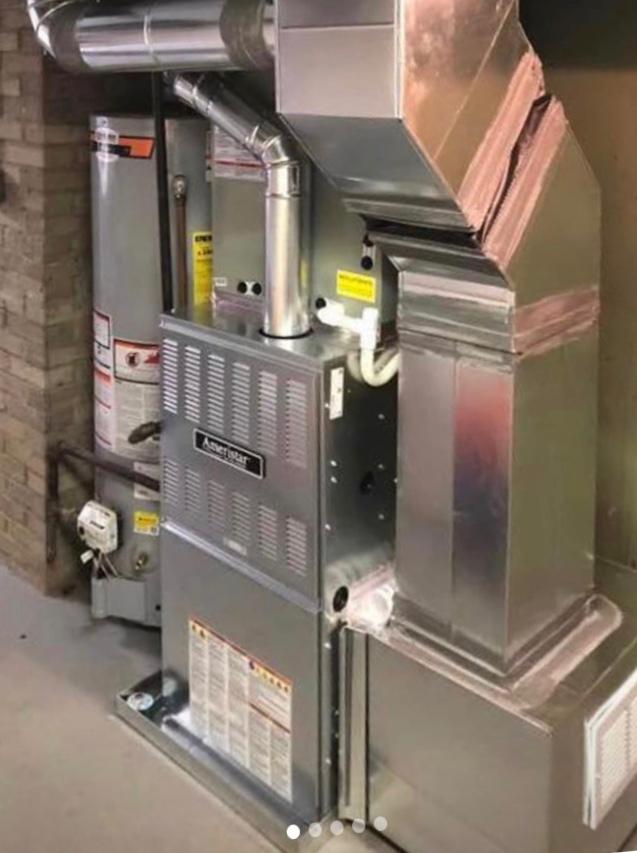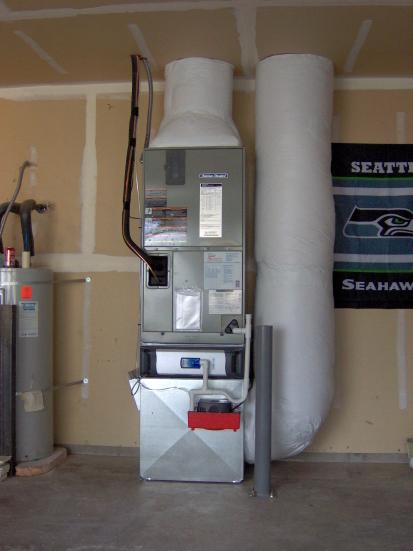Furnace installation experts: Ensure your home stays comfortable all winter long
Furnace installation experts: Ensure your home stays comfortable all winter long
Blog Article
The Ultimate Overview to Heating System Setup for a Cozy Home
Heating system setup is a vital element of keeping a comfortable home environment, particularly throughout the cooler months. Recognizing the numerous kinds of heating systems offered and the value of selecting the suitable size can greatly affect both efficiency and convenience levels. A thorough installation procedure, complemented by the right tools and products, guarantees ideal efficiency. This guide intends to furnish homeowners with the knowledge required to make informed decisions and implement efficient upkeep methods. As you think about these variables, the question remains: what steps can you require to guarantee your furnace offers you well for several years to find?
Kinds of Heaters
When considering furnace setup, recognizing the various sorts of heaters readily available is crucial for making a notified choice. The main types of heaters include gas, electric, and oil heaters, each offering distinctive advantages and factors to consider.
Gas furnaces are the most usual choice due to their performance and lower functional prices. They make use of gas or lp, giving quick home heating and constant performance, making them optimal for cooler environments.
Electric furnaces, while usually easier to set up and keep, often tend to have greater operational expenses. They are often favored in locations where gas service is inaccessible or for homes with existing electric infrastructure.
Oil heating systems, though less usual today, continue to be a sensible option in certain regions. They shed heating oil, which can be advantageous throughout cooler months, yet their reliance on oil shipment positions potential challenges.
Furthermore, there are high-efficiency designs readily available across these kinds, which can significantly reduce energy usage and energy expenses. Inevitably, comprehending these furnace types will certainly aid house owners pick a system that lines up with their home heating requires, budget plan, and energy choices.
Choosing the Right Size
Choosing the proper dimension for a furnace is critical to making sure ideal efficiency and energy performance. An undersized furnace will certainly have a hard time to preserve comfortable temperatures during the cool months, bring about raised deterioration, higher power costs, and potential system failure. On the other hand, an oversized heater may cycle on and off also frequently, resulting in ineffective home heating and irregular temperature level distribution within the home.

Furnace sizes are typically gauged in British Thermal Devices (BTUs), which show the quantity of energy required to warm an area. It is suggested to seek advice from with a certified heating and cooling professional who can do the necessary computations and recommend a suitably sized device. furnace repair. Purchasing the right heater dimension not just boosts convenience yet likewise adds to long-lasting power savings and system integrity
Installment Process Introduction
Once pop over to this site the suitable furnace dimension has actually been identified, the following step entails understanding the visit site installation process. This process commonly starts with a complete assessment of the installation website, consisting of the existing ductwork and air flow systems. Proper preparation is necessary to make sure seamless integration and optimal performance of the new furnace.
The installation generally includes separating the old unit, which involves securely getting rid of any electric connections, gas lines, and ductwork connected to the previous furnace - furnace repair. When gotten rid of, the new furnace is thoroughly positioned and leveled, making sure that it fulfills the producer's requirements for ideal operation
Following, the installer will certainly link the required gas and electrical lines, adhering to local codes and safety guidelines. Following this, ductwork may require to be changed or replaced to accommodate the new system, ensuring reliable air movement throughout the home.

Crucial Devices and Products
Gathering the important tools and products is essential for an effective heater setup. Appropriate prep work guarantees that the installment procedure is efficient and lessens the possibility for errors.
Secret tools called for include a drill, screwdrivers, wrenches, pliers, and a degree. A multimeter is vital for electric connections, while a pipe cutter and adjustable wrench are needed for gas line installation. Furthermore, a tape measure and a stud finder will aid in guaranteeing precise positioning and safe and secure fastening of the heating system.
In regards to products, you will need ductwork, insulation, and securing tape to guarantee optimal air flow and power performance. It is likewise crucial to have a new heater filter handy, along with venting materials, such as PVC pipe or metal flue, depending upon the kind of furnace being installed.
Security tools, consisting of handwear covers, goggles, and a click to read more face mask, is additionally important to secure versus dust and particles throughout setup. Having all these tools and products readily offered not only simplifies the process yet also enhances the safety and effectiveness of the furnace setup.
Upkeep Tips for Durability
To make certain the long life of your heating system, it is important to implement a normal upkeep routine that deals with key elements of the system. Beginning by replacing or cleaning the air filter every one to three months, as a clogged filter can restrict air flow and lower effectiveness. Additionally, inspect and clean the blower assembly to stop dust build-up that can hinder performance.
Next, check the thermostat settings and recalibrate if needed to ensure accurate temperature policy. Check the ductwork for leaks or obstructions, as this can result in power loss and unequal home heating. Frequently lubricate the electric motor and bearings according to the supplier's referrals to lessen wear and tear.
Specialist assessments must occur annually, where a qualified technician can analyze the heater's total problem, look for gas leaks, and make certain that safety and security functions are working appropriately. Finally, consider mounting a programmable thermostat to maximize power use and keep constant home temperatures. By taking on these maintenance methods, you can enhance your heater's performance, expand its life-span, and eventually delight in a comfortable and comfortable home setting.
Conclusion
Efficient heating system setup is essential for accomplishing optimal home comfort and power effectiveness. Understanding different heating system types and choosing the appropriate dimension ensures correct capability.
Report this page